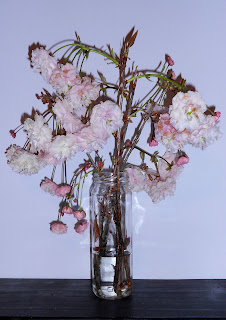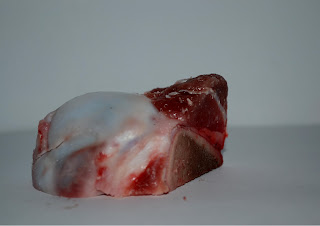Monday, 29 October 2012
Thursday, 18 October 2012
DVD cover
Monday, 27 August 2012
"I like to draw stuff sometimes..."
I learnt this technique while I was in high school, in grade 10. I really liked the finished effect, so I have carried on producing these "Word Drawings". Over the years of practice I have refined my technique and I am happier and happier with how they are turning out.
These works are better viewed from a distance as the words group together and create the image better from afar; close up the detail is lost slightly, but the viewer is able to read the words that I have used to make up the image. This effect is intentional.
This is my latest work. I produced it one an A2 size and I used a normal ball point pen.
These works are better viewed from a distance as the words group together and create the image better from afar; close up the detail is lost slightly, but the viewer is able to read the words that I have used to make up the image. This effect is intentional.
 |
| Close up view |
Wednesday, 22 August 2012
Composition Photos
 |
| Coke Bottle Girl |
This coke bottle pair in my opinion is very avant garde. I likened the girl's curves to the coke bottle. I also found the colours that she was wearing and the colours of the vending machine a simularity.
 |
| Thembi's Doo |
My friend has a very edgey and "over-the-top" hairstyle. I was desperate to find a flower that looked like her hair. I was thinking of an azalea, but I couldn't find any. I likened the rock and its colour to Thembi's complexion. The shape of the bush has a very similar shape to the shape of her hairstyle.
 |
| Fire Extinguishers |
This was a very straight forward simularity, that's what caught my attention...the simplicity of this compostion.
Saturday, 28 July 2012
Assignment 2
RATIONALE:

Assignment 1
This project was called "The Poetics of Space". This project was influenced and based on the works of Gary Wallis.
With the use of photoshop I created these abstract pieces. I used three layers of different photographs and adjusted the opacity levels to get a specific effect.
With the use of photoshop I created these abstract pieces. I used three layers of different photographs and adjusted the opacity levels to get a specific effect.
 |
| This work is of an intersection in 50 Durban road. I took a basic view of the traffic going through an intersection, then I took a photo of the robot first going green then it changing to red. The robot is definitely the focal point and the background is very faded as it is just creating the scene, as the viewer's eye should be focusing on the robot. |
 |
| I took 3 photos of a construction site near Scottsville Mall. I took one of just the general view of the site, then 2 other photos of the workers performing different tasks. This is my favourite photograph out of the 3 I have posted. |
Case Study of a Contemporary Art Photographer
Peter Fischli and David
Weiss:
(Artist from chapter
4 of “The Photograph as Contemporary Art”)
Peter Fischli
and David Weiss were an artist duo who had been collaborating work ever since
1979. They were from Switzerland and were very well known for their
contemporary work as photographers in particular. Their most famous work was in
a film called “The Way Things Go”; their
work in this film was described as being “post-apocalyptic”. Their work in this
film was all about objects flying and crashes and explosions. Fischli is still alive;
he lives and works in Zurich. Weiss died on the 27th of April in
2012.
Fischli studied
at Accademia di Belle Arti, Urbino and the Accademia di Belle Arti, Bologna.
Weiss, after discovering that he didn’t enjoy any type of design and decorating
degree, he enrolled in Kunstgewerbeschule in Basel and for a while worked as a
sculptor. He then moved to New York and this is where he discovered minimalist
art. Fischli and Weiss met in 1978. They were in a rock band called Migros for
a very short time. Their first collaborated work was called “Wurstserie”(“sausage series”, 1979).
This work depicted scenes constructed with different types of meat, sausages and
everyday objects.
Fischli and
Weiss’s work was described as being ironic and humorous. Their work seemed like
it was influenced by Marcel Duchamp, Dieter Roth and Jean Tinguey. Fischli/Weiss’s
work was described as being “parody bearing”. They used photography, film,
sculptures from different materials and installations. They took objects from
everyday life and arranged them into art pieces in a humorous and ironic
manner.
“Wurstserie” was a very interesting piece of
Fischli/Weiss. They created normal and ordinary scenes which no longer appeared
ordinary as they created these scenes with sausages and meat. They created
scenes in the city with buildings made out of cardboard boxes, cars made out of
mini sausages (that have been cut to resemble cars) and sliced gherkins to
resemble sidewalks. Another part to this piece shows people that have been made
out of sausages and thinly sliced meat. One that caught my attention in
particular is of one sausage that is stooped over with a thin piece of ham
wrapped around it. To me it looks like an old man with a shawl around his
shoulders. This is so original and very clever as the items of meat really do
resemble what they are intended to look like (i.e. cars, people and shawls).
In a point in
their work Fischli and Weiss experimented a lot with balancing daily objects
and making them into art pieces. My favourite of these “balancing works” is “Equilibres – quiet afternoon”. This was a
series of balancing objects that Fischli and Weiss photographed. They are
arranged in very precarious positions and in very Avant-Garde ways. Dull, mundane
backgrounds were used as shadows could be cast on them and they were fully
visible in the photograph. Fischli/Weiss used harsh shadows behind their objects,
but this created another dimension to their works. My favourite photograph out
of the series is of 5 shoes that are interlocked and are balancing in that
position. It’s so dynamic and geometric.
These contemporary artists who create art works using everyday objects
intrigue me anyway, so Fischli and Weiss’s work intrigues me to no end! They
take these daily objects and not only create an art work, but they position
them in such a way that their works can never just be glanced over. Their work
is extremely attention grabbing, dynamic and original.
|
|

“Equilibres – quiet afternoon”.
 “Wurstserie”
“Wurstserie”
Précis of "The Photograph as Contemporary Art"
Chapter 4:
“Something and Nothing”
The
following chapter refers to ordinary, non-human, daily objects and viewing them
as being extraordinary, and admired as art. These daily objects are objects
that we as humans over look and would never normally admire as art. The contemporary
artists/photographers mentioned in this chapter arrange these seemingly normal objects
in such a way that the viewer conceptualises it in way they wouldn’t normally,
and admire the photograph as a work of art.
This type of photography pushes the boundaries of what is considered art
and what isn’t.
Many of the artists juxtapose ordinary objects in an extraordinary way and this redefines the reason and point of the object. The photographers balance and stack objects; they take still images of corners of things, unoccupied spaces, rubbish and transitory forms such as snow, condensation and light. The way that these objects are arranged and photographed makes the viewer contemplate the world around us.
A
Mexican artist, Gabriel Orozco experimented with found objects. His piece
called Breath on Piano is an example.
It is of a corner of the piano and on the piano is a section of condensation
where someone has breathed onto the shiny and smooth surface.
Jason Evans’s work entails a black and white series of photographs. New Scent is an example of one of his works. This photograph is of an odd sculptural form induced by weather conditions. It is of silt and sand build up after coastal rainstorms.
Nigel Shafran’s Sewing Kit invites the viewer into an imaginary investigation of the room. Shafrans uses objects of daily life such as grass cuttings, scaffolding and washing up on a draining board. He wants to show poetically how we live our lives and how unconsciously we display and order objects in a specific way.
Laura Letinsky photographed still-life’s with a different dimension to them. She shows the relationship of humans and the suggested presence of humans in her still-life’s.
These
are only a few artists mentioned from this chapter as most of them all have the
“daily object representation” subject matter in common. This chapter shows the
evolution of contemporary photography and the innovativeness of the artists
mentioned in the above précis.
Subscribe to:
Comments (Atom)




















